
Irregular Simple Past and Past Participle Verb Forms From
1 Turn the verb into an adjective to modify nouns. 2 Connect with auxiliary verbs to create different tenses, such as the present perfect tense. Here's an example of participles used as adjectives: Let's say you're at a zoo looking at otters. One otter is eating, and another is swimming.

Participles What Is A Participle? Present & Past Participle • 7ESL
Simple past tense (also known as past simple, past indefinite, or preterite) is formed by placing a verb in its past form. Now, it's time to explain the difference between regular and irregular verbs. Regular vs. Irregular Verbs Regular English verbs follow the same rule every time you use them in past tenses.
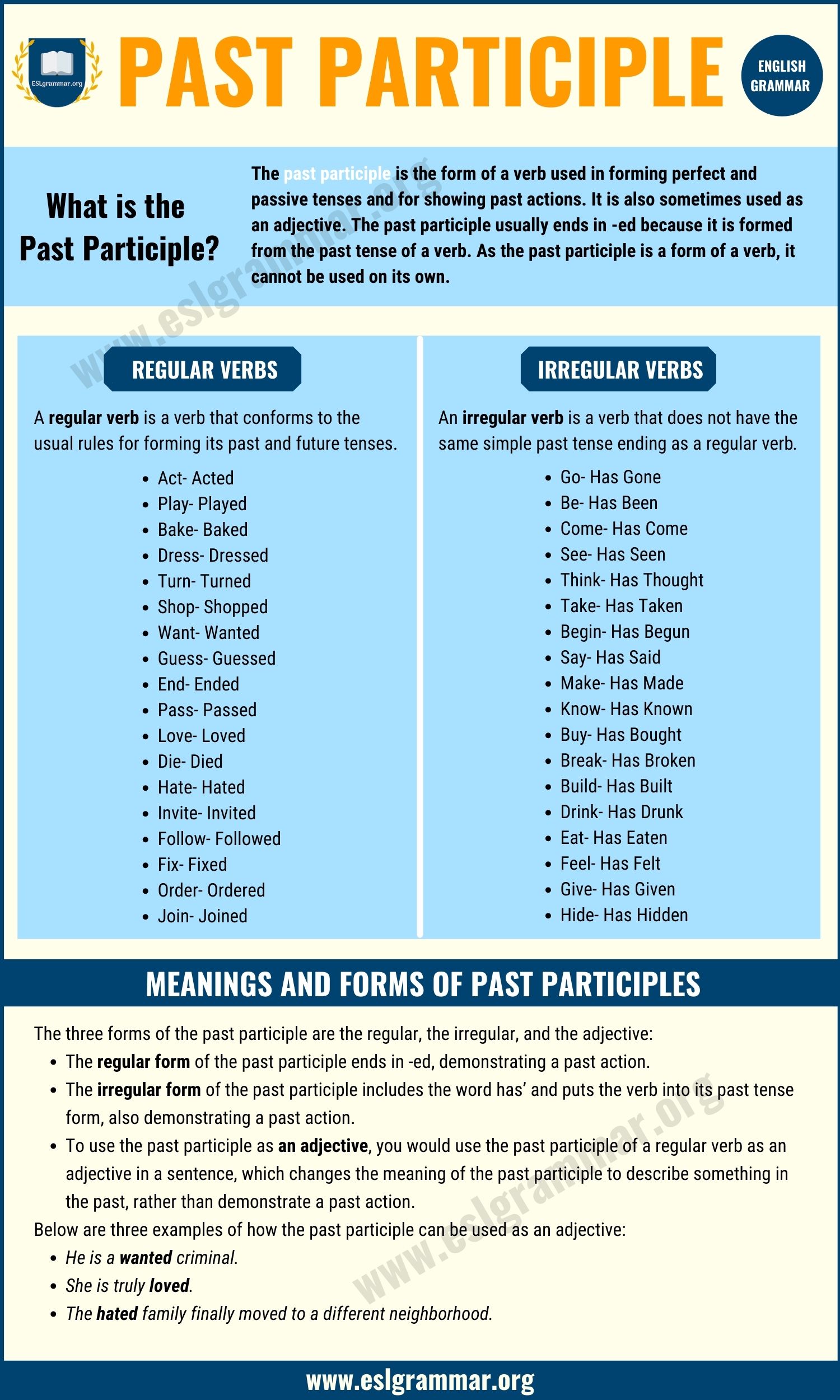
Past Participle Meanings and Different Forms of Past Participles
The past participle is generally used with an auxiliary (or helping) verb— has, have, or had— to express the perfect aspect, a verb construction that describes events occurring in the past that are linked to a later time, usually the present.

List of Past Participle Grammar Syntax
A past participle is a verb form that communicates an action completed in the past. You will typically recognize a past participle as a conjugated verb, such as walked or tried. You might also notice that past participles can resemble the simple past tense of verbs (i.e., I walked to school. ).

List Of Past Participle Past Participle Irregular verbs in groups
What Is the Past Participle? Past Participle and Past Perfect Verb Tense Past Participle and Passive Voice Past Participle as an Adjective Forming the Past Tense and Past Participle Regular Verbs in the Past Tense and Past Participle Irregular Verbs in the Past Tense and Past Participle
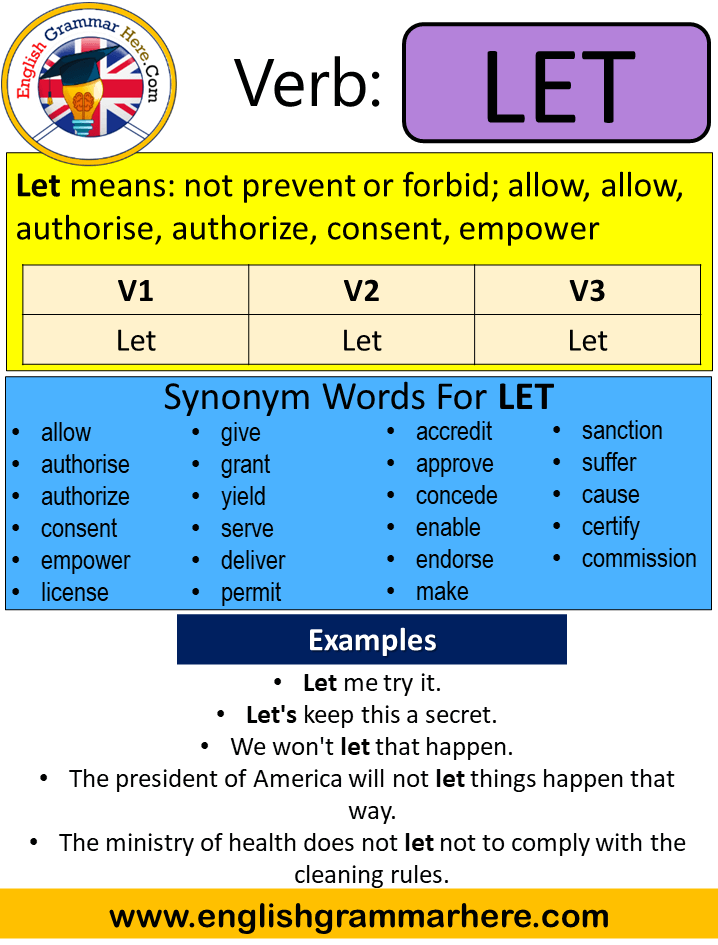
Let Past Simple, Simple Past Tense of Let Past Participle, V1 V2 V3
The past participle is the form of a verb used in forming perfect and passive tenses and for showing past actions. It is also sometimes used as an adjective. The past participle usually ends in -ed because it is formed from the past tense of a verb. As the past participle is a form of a verb, it cannot be used on its own. Past Participles of.

PAST PARTICIPLE
A past participle is a word derived from a verb that can be used as an adjective, to form perfect verb tenses, and to form the passive voice. It is one of two types of participles, along with present participles. The past participles of regular verbs are usually formed by adding the suffix "-ed" (e.g., "learn" becomes " learned ").
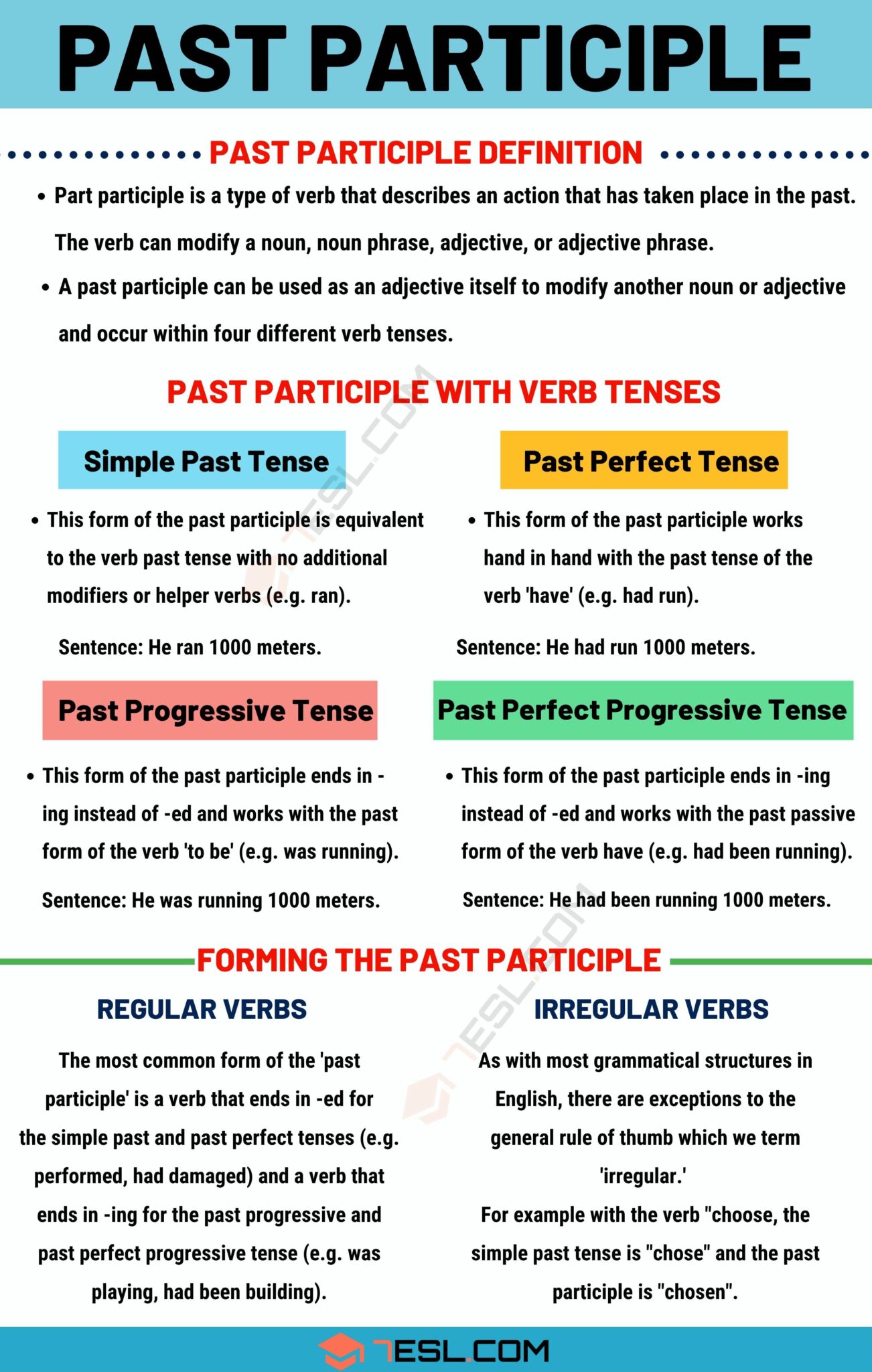
Past Participle Definition, Forming Rules and Useful Examples • 7ESL
Grammar & Vocabulary Dozens of English verbs have irregular past tense forms, as well as irregular past participles. Here's a list of the most common ones.
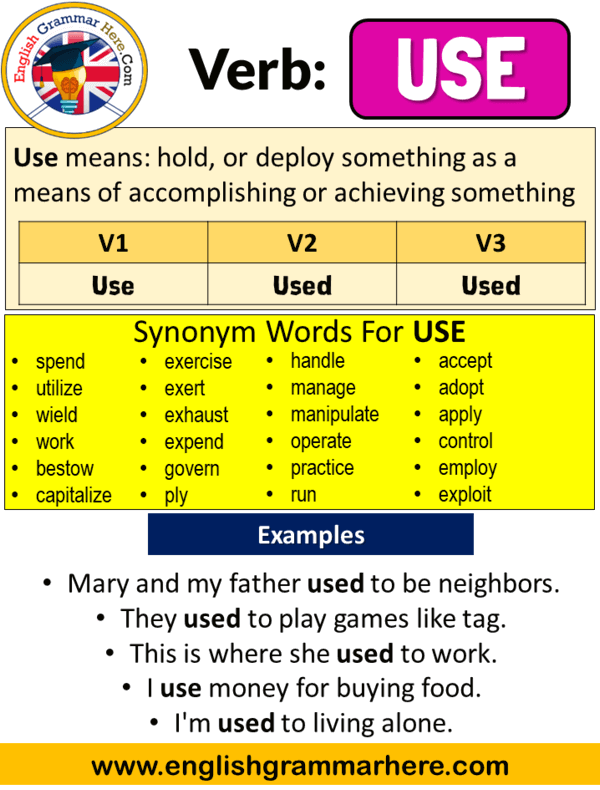
Use Past Simple, Simple Past Tense of Use Past Participle, V1 V2 V3
noun : a participle that typically expresses completed action, that is traditionally one of the principal parts of the verb, and that is traditionally used in English in the formation of perfect tenses in the active voice and of all tenses in the passive voice Examples of past participle in a Sentence
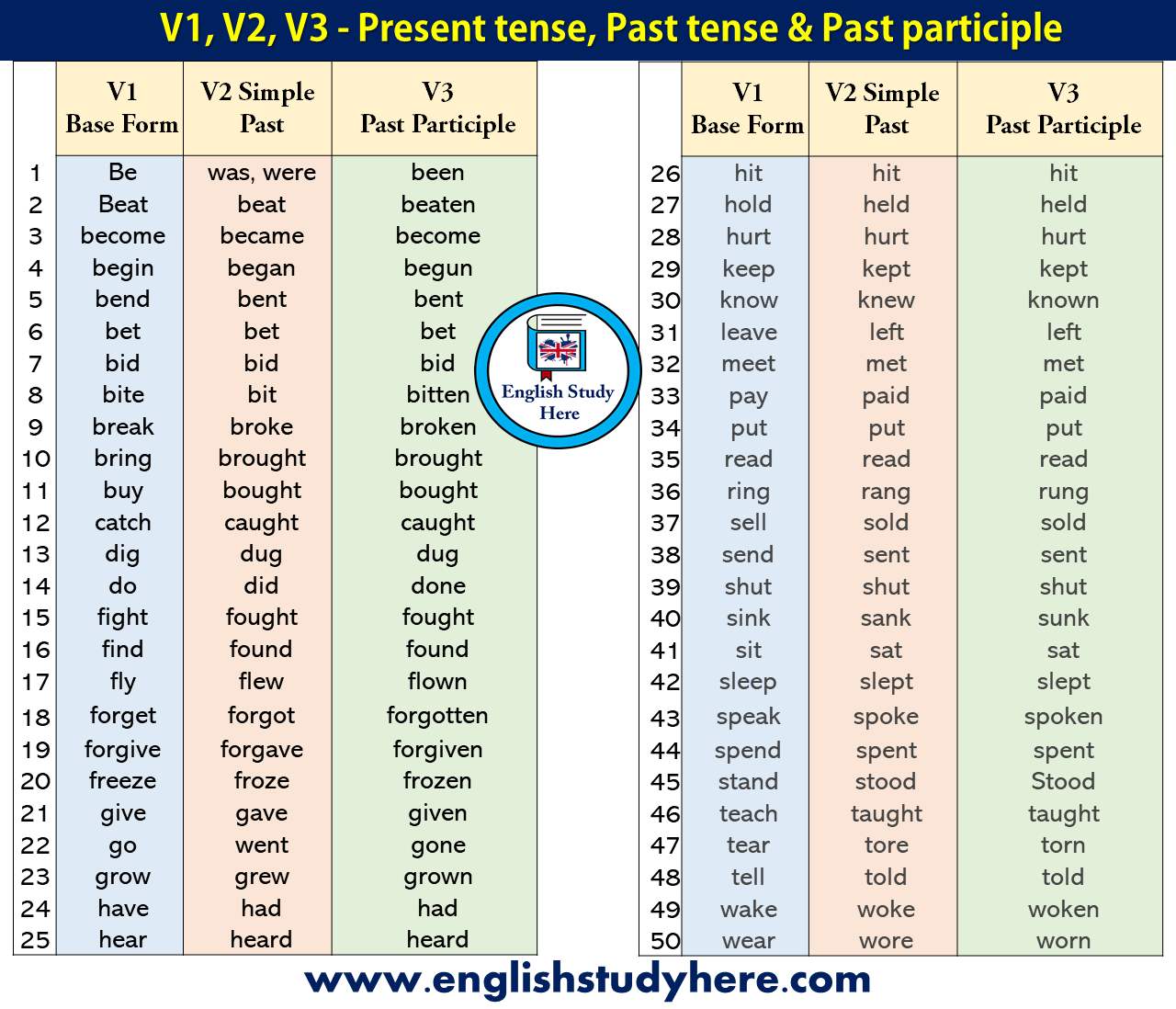
present past and past participle verbs list pdf
1. Forming compound tenses use the present participle ( -ing form) in progressive tenses Examples: Today, Ella is running her first ever marathon. (present progressive) She was training last week. (past progressive) auxiliary verb be + present participle use the past participle (3rd form of the verb) in perfect tenses Examples:
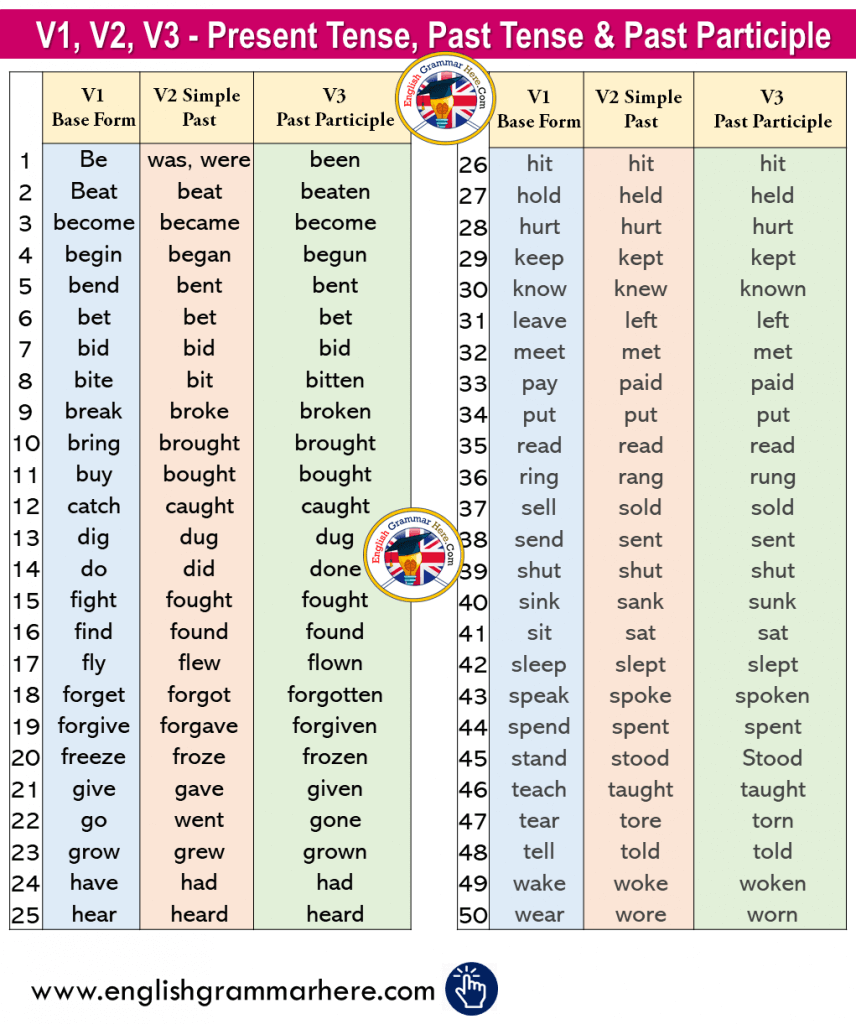
V1, V2, V3 Present Tense, Past Tense & Past Participle English
A past participle is a word with the following three traits: It is formed from a verb. It is used as an adjective or to form verb tense. It probably ends "-ed," "-d," "-t," "-en," or "-n." Table of Contents A Closer Look at a Past Participle Find the Past Participle Test Video Lesson Examples of Past Participles Used as Adjectives
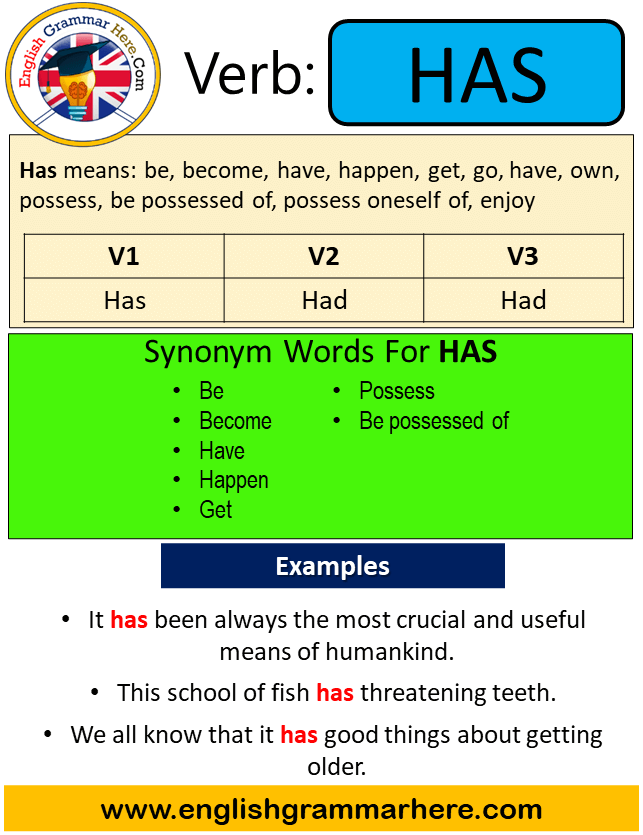
Has Past Simple, Simple Past Tense of Has, Past Participle, V1 V2 V3
The simple past is a verb form that expresses discrete, completed, non-continuous actions or states that occurred in the past. Regular English verbs take an -ed suffix in the simple past; however, irregular English verbs undergo stem, consonant, and other phonological changes that do not follow any real pattern in the simple past.
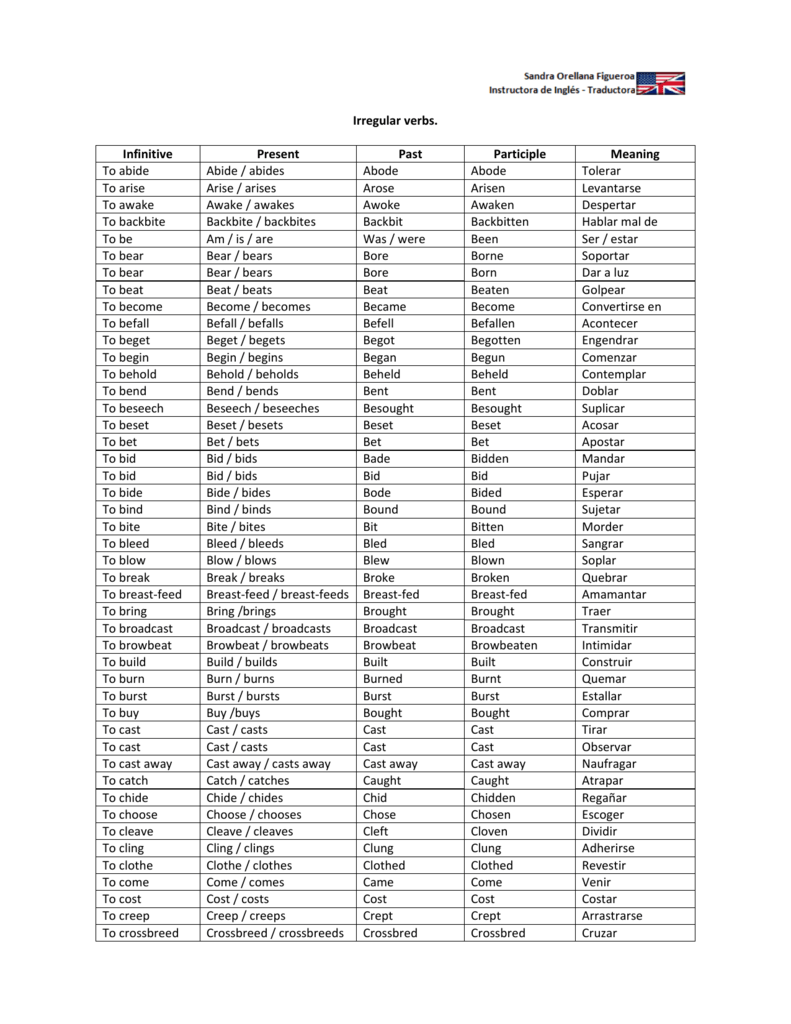
Past Participle For Come Slide Reverse
A past participle is formed from a verb. Because it is used to express actions that have already happened, it takes the past tense form. Most past participles end in -ed. Past Participle Examples: Verb: to play Past participle: played Sentence: She had played for hours. (used in past perfect tense) Verb: to accelerate Past Participle: accelerated
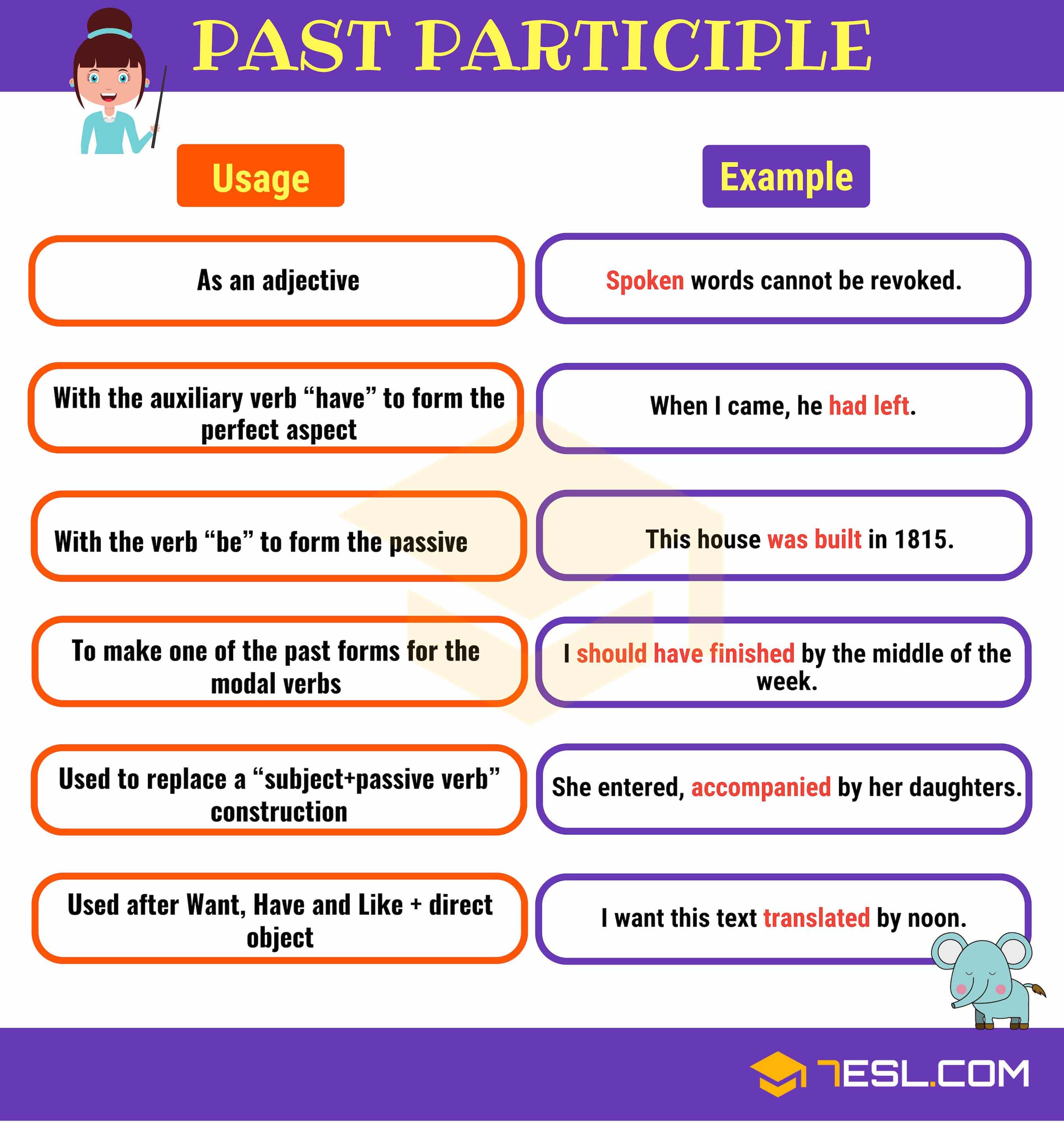
Participles What Is A Participle? Present & Past Participle • 7ESL
Past tense and past participle are two tenses that may seem the same but serve different purposes. In this article, we explore the differences between past tense vs past participle, when to use each tense, and examples of each in a sentence. Table of Contents What Is Past Tense? Past tense is one of the three major English verb tenses, which are:
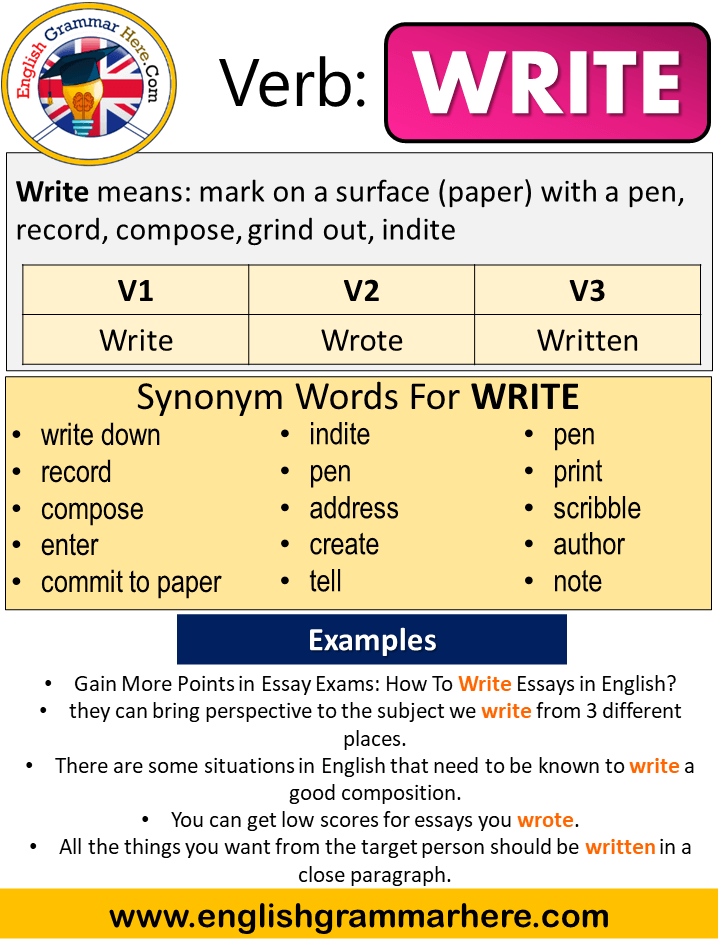
Write Past Simple, Simple Past Tense of Write, Past Participle, V1 V2
Tweet. Past Participle is the Verb form that is used in the Past Perfect tense which means they take their position after - have, has or had. It is one of the two Verb forms that are in the past tense in the English language. Past Participles are usually formed by adding -ed, -d, -t, -n and -en to the base form of the Verbs although there are.
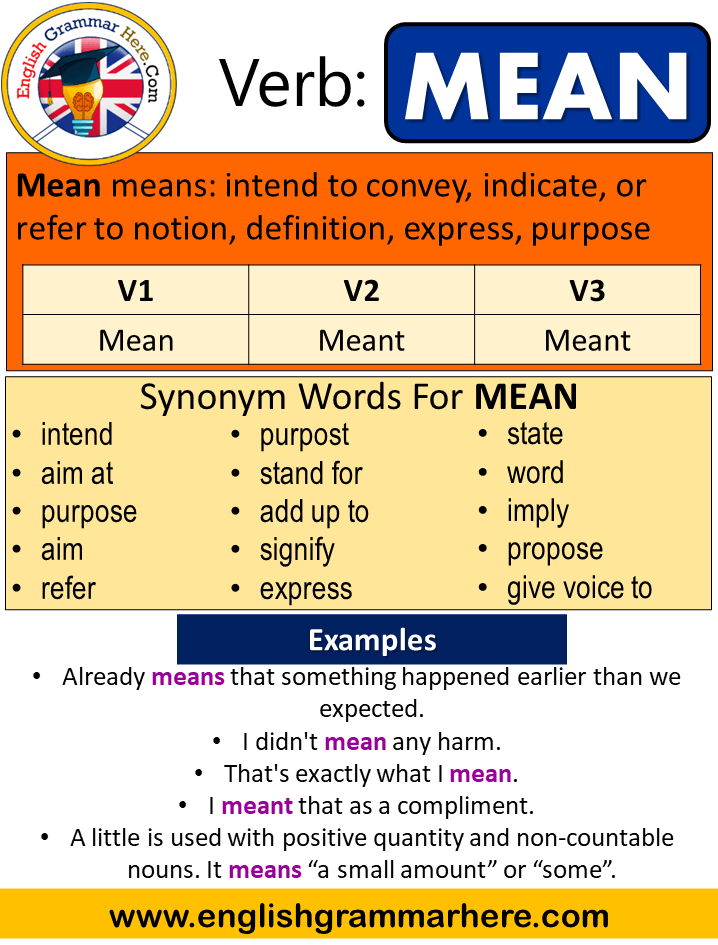
Mean Past Simple, Simple Past Tense of Mean, Past Participle, V1 V2 V3
Table of irregular verbs - English Grammar Today - a reference to written and spoken English grammar and usage - Cambridge Dictionary